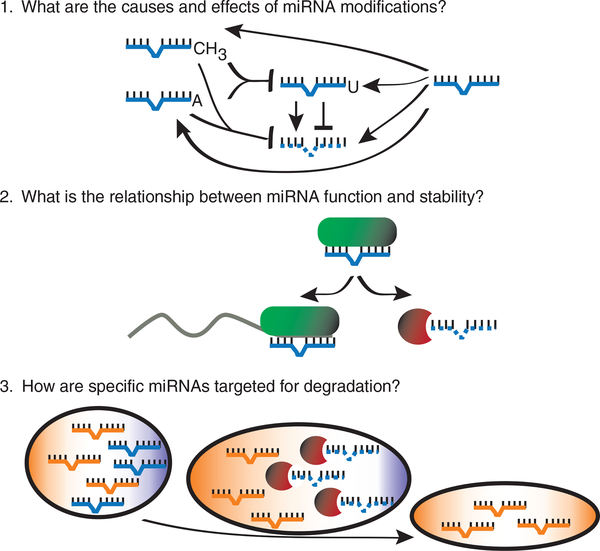Figure 3.
Outstanding questions regarding factors that regulate miRNA stability. First, some modifications appear general, such as methylation of plant miRNAs, whereas others may be targeted to specific miRNAs, such as adenylation of miR-122 (refs. 18,29). In several cases the modifying enzyme and effect of the modification on miRNA stability are not yet known. Second, evidence is mounting that Argonaute is a limiting factor for miRNA function and stability13–16. Target availability has been shown to influence the association of a miRNA with Argonaute and its protection from degradation in vitro31, but whether this parameter influences miRNA accumulation in vivo is not yet established. Third, the extent of targeted degradation of specific miRNAs as a means to transform the cellular miRNA population is unclear. Decay of select miRNAs could contribute to the dynamic changes in miRNA levels that often accompany differentiation.

